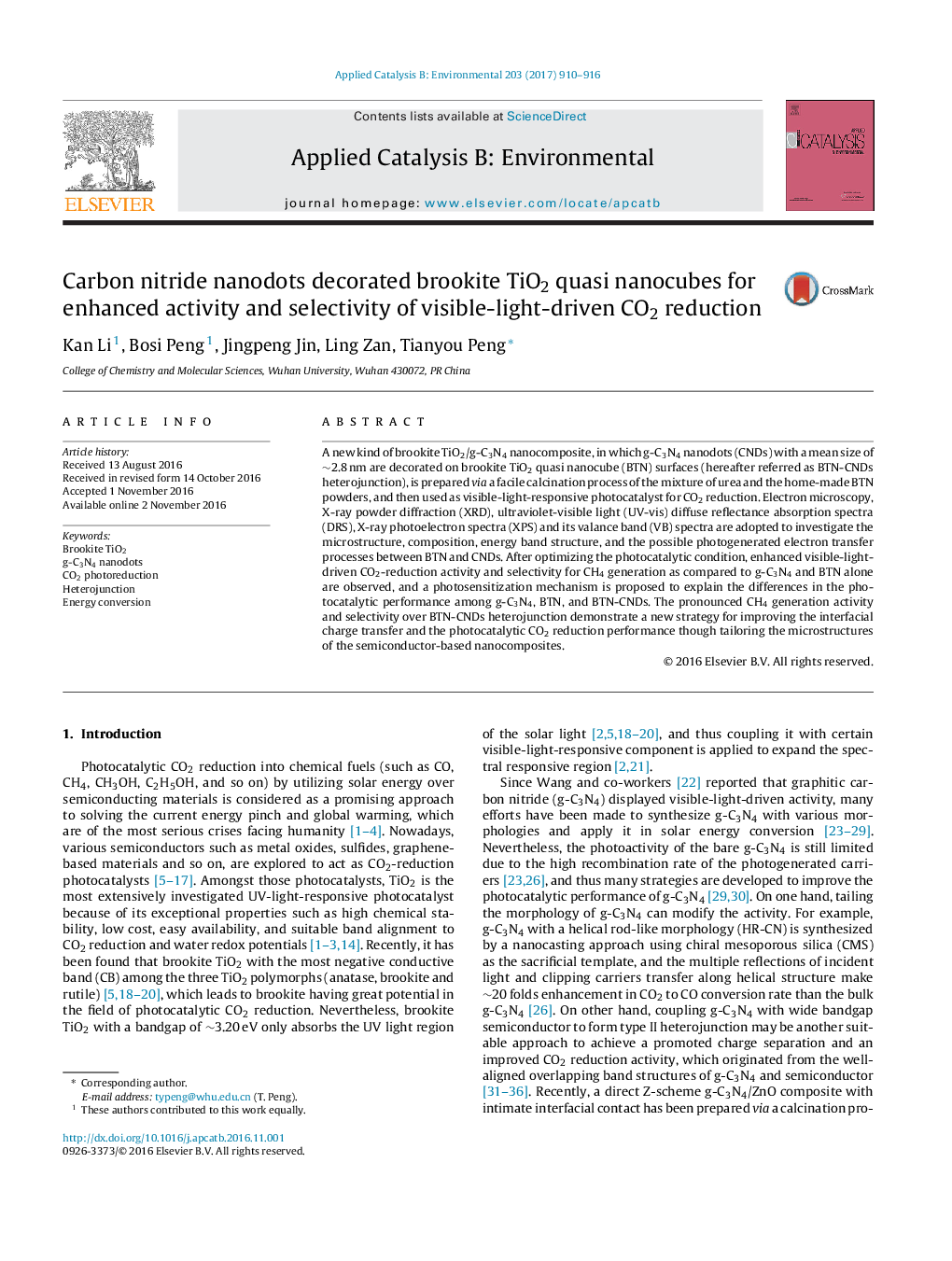| کد مقاله | کد نشریه | سال انتشار | مقاله انگلیسی | نسخه تمام متن |
|---|---|---|---|---|
| 6454612 | 1418817 | 2017 | 7 صفحه PDF | دانلود رایگان |

- g-C3N4 nanodots (CNDs) decorated brookite TiO2 quasi nanocube (BTN) is prepared.
- BTN-CNDs has enhanced CO2-reduction activity as compared to g-C3N4 and BTN alone.
- Highly dispersed CNDs on BTN surface cause better adsorption capacity of reactants.
- The CH4 generation selectivity is due to the synergistic effect of CNDs and BTN.
- Photosensitization is proposed to explain the BTN-CNDs' CO2-reduction activity.
A new kind of brookite TiO2/g-C3N4 nanocomposite, in which g-C3N4 nanodots (CNDs) with a mean size of â¼2.8Â nm are decorated on brookite TiO2 quasi nanocube (BTN) surfaces (hereafter referred as BTN-CNDs heterojunction), is prepared via a facile calcination process of the mixture of urea and the home-made BTN powders, and then used as visible-light-responsive photocatalyst for CO2 reduction. Electron microscopy, X-ray powder diffraction (XRD), ultraviolet-visible light (UV-vis) diffuse reflectance absorption spectra (DRS), X-ray photoelectron spectra (XPS) and its valance band (VB) spectra are adopted to investigate the microstructure, composition, energy band structure, and the possible photogenerated electron transfer processes between BTN and CNDs. After optimizing the photocatalytic condition, enhanced visible-light-driven CO2-reduction activity and selectivity for CH4 generation as compared to g-C3N4 and BTN alone are observed, and a photosensitization mechanism is proposed to explain the differences in the photocatalytic performance among g-C3N4, BTN, and BTN-CNDs. The pronounced CH4 generation activity and selectivity over BTN-CNDs heterojunction demonstrate a new strategy for improving the interfacial charge transfer and the photocatalytic CO2 reduction performance though tailoring the microstructures of the semiconductor-based nanocomposites.
Pronounced CO2-reduction activity and selectivity for CH4 generation are achieved from g-C3N4 nanodots decorated brookite TiO2.114
Journal: Applied Catalysis B: Environmental - Volume 203, April 2017, Pages 910-916